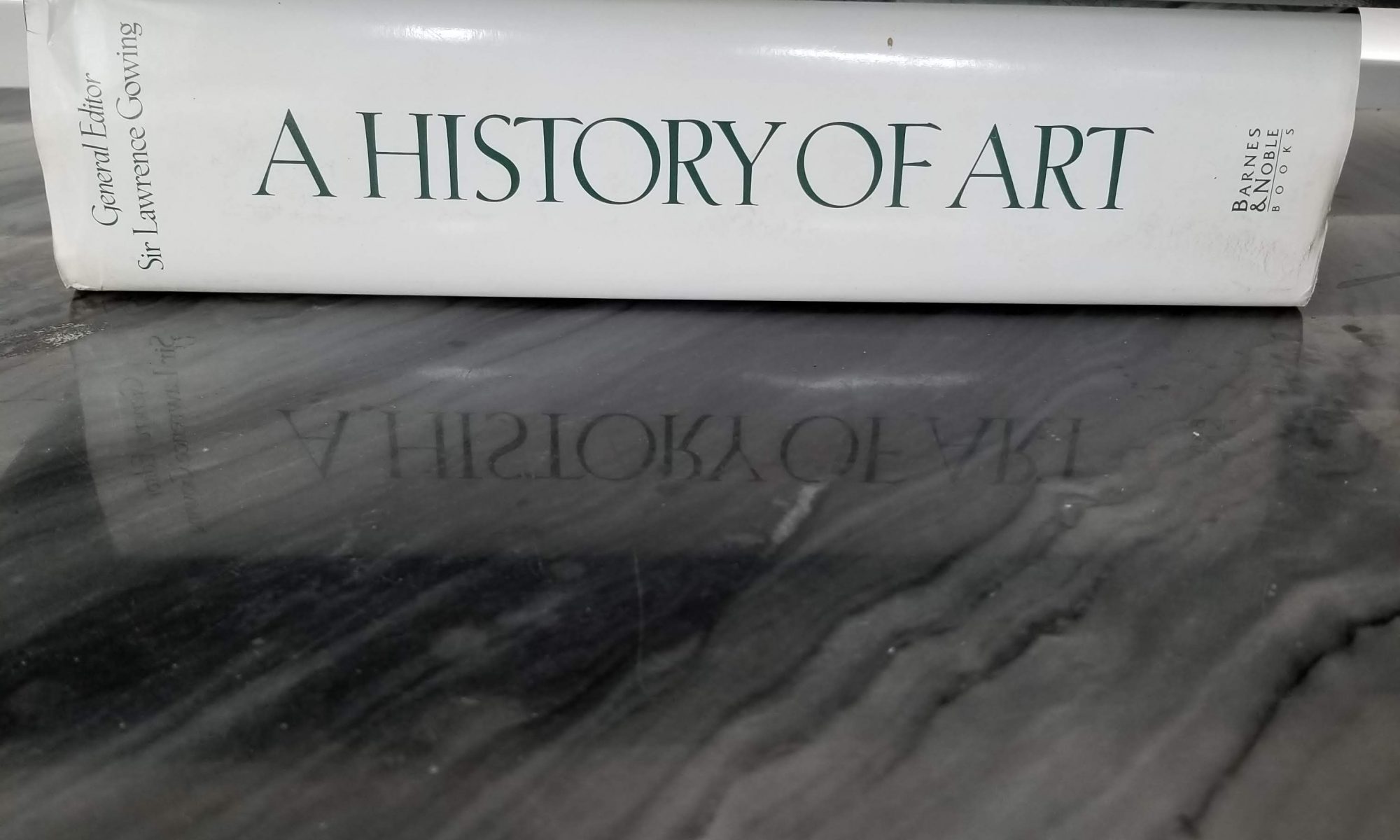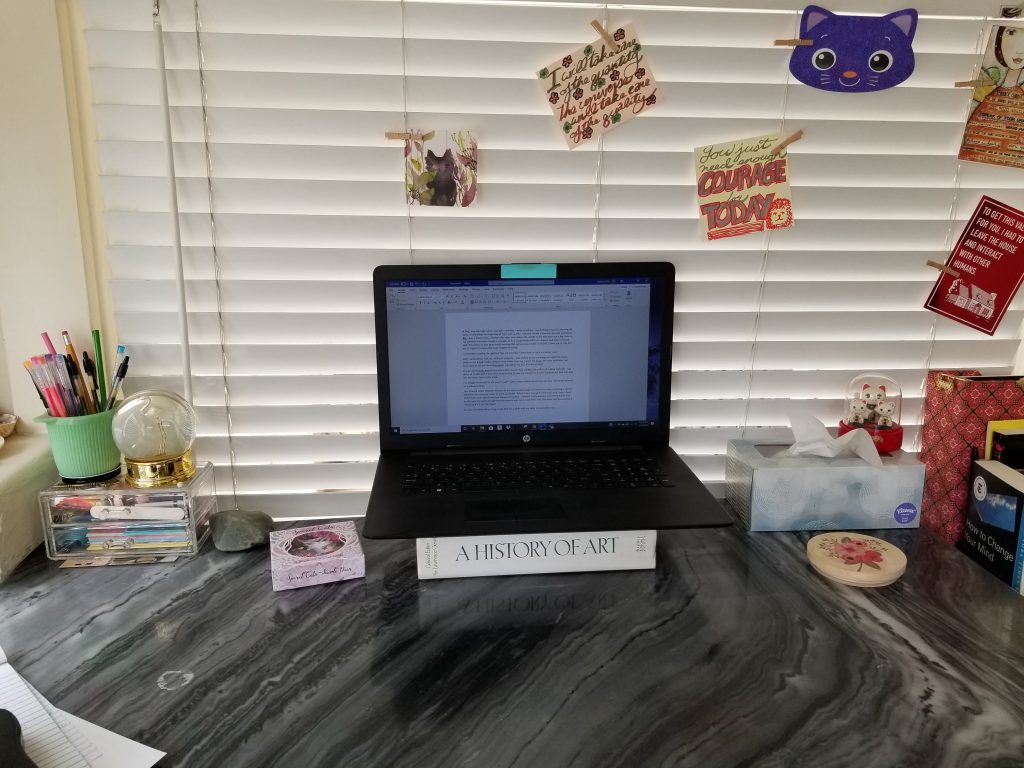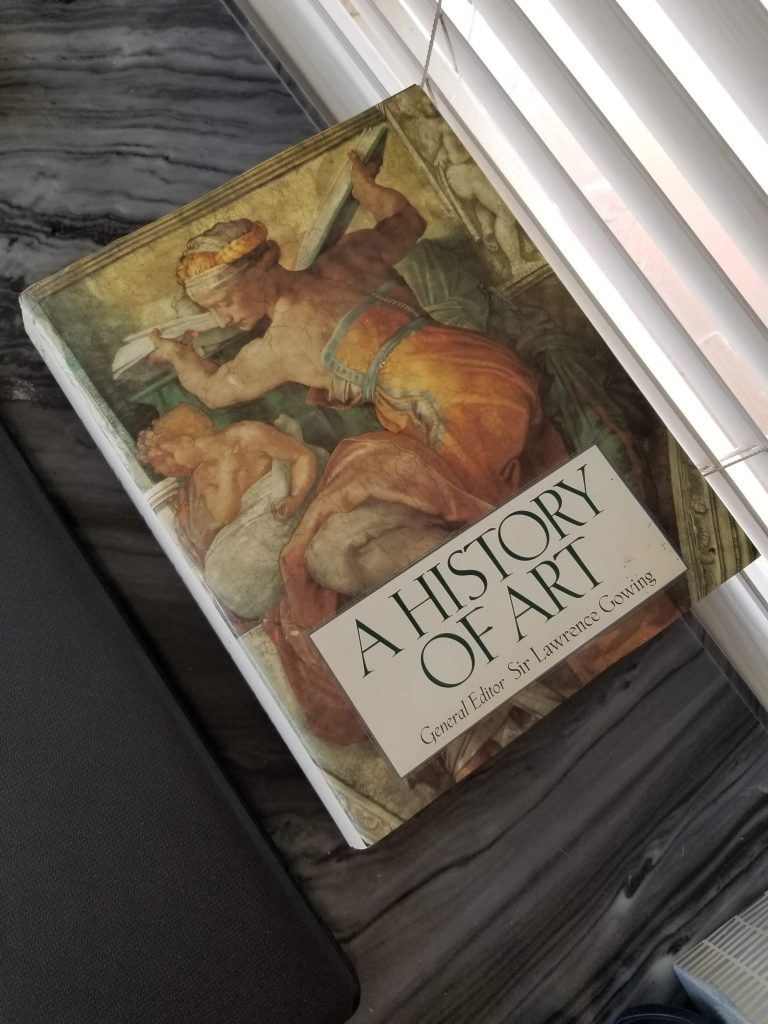A long, long time ago, when I was just a wee lass, I went to college. I was looking forward to learning all sorts of new things and exploring all there was to offer. I did what I could but being a dance major and having ballet class every day in the middle of the afternoon put a big crimp in my schedule and I never got around to taking figure drawing or English literature, or the history of art.
After I graduated, I took up reading in a big way. I was going to make up for not taking English literature in the bargain aisles of Barnes and Noble. One day, I spied this tome, the same book that had been used as the textbook for the art history class that I could never work into my schedule. Now was my chance, I would be my own art history class!
It is an unruly book and did not lend itself to beach chair reading (my preferred reading method). I tried to be studious and read a bit of it, but I don’t know when last time was that I opened it.
I’ve dragged it around for the past *cough* 20+ years, always telling myself that one day, I would get around to breaking it open again. I would sit at a table with a good reading light and learn everything about art history.
Fast forward to last Monday. Because of the national hermitage movement, no one is meeting in person anymore. But everyone wants to meet on ZOOM. Which is fine, except for the multi-neck, potato head effect that occurs when I have my laptop on my desk. I needed a little booster, something sturdy that would raise my laptop enough that the camera was more at eye-level than chin level. And guess what, A History of Art is just the thing!
Since this book will be living on my desk for a while, I decided that I might as well crack it open. When I did, I laughed out loud! The dust jacket flap was marking the place I had stopped at all those years ago … page 54, Ancient Near Eastern Art.
Here’s the thing, I know why I stopped. I wanted to learn about post-Renaissance, Western European art through mid-20th Century American art. And while I wanted to be a good student and begin at the beginning, I only managed to get from the Paleolithic era to roughly circa 2,000 BC.
It’s not because I don’t think that ancient art isn’t interesting or doesn’t have something to illuminate about the human condition, it’s just that I have a hard time relating when something is so far removed from my frame of reference.
Which got me thinking, I wonder if teaching history chronologically is the wrong approach? I wonder if we might be better served learning history backwards?
I flipped through the book to find where I thought I wanted to start, and I landed on page 636. This chapter deals with the period referred to as Mannerism, which seems to be the late Renaissance period immediately preceding Baroque. I think I’ll start there and work my way forward for a bit, then jump back and take a stab at the first half of the book again.
I’m looking forward to filling in the gaps in my knowledge of art history, even if it is in a haphazard way. And more importantly, to being able to ZOOM without looking like a potato head!





